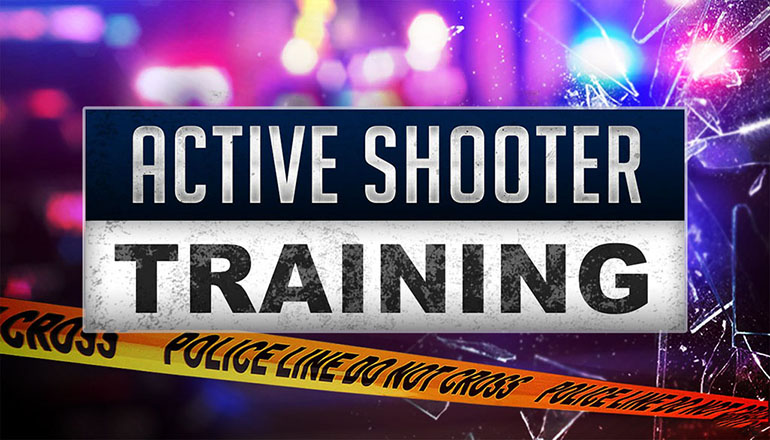What You Need to Understand About Effective Active Shooter Training
Wiki Article
Checking Out the Key Elements and Goals of Effective Active Shooter Training Programs
Active shooter training programs are essential in gearing up people and companies with the essential skills to react efficiently to possible dangers. As we discover the intricacies of these training programs, it becomes obvious that comprehending their extensive nature is essential to enhancing safety and security steps and response abilities.Importance of Energetic Shooter Training
Active shooter training programs are important for enhancing preparedness and reaction when faced with possible hazards. These programs intend to furnish individuals, companies, and neighborhoods with the knowledge and abilities necessary to efficiently reply to energetic shooter scenarios. The raising frequency and seriousness of such incidents underscore the importance of proactive steps, as prompt and enlightened actions can significantly mitigate harm.
Furthermore, these programs can help ease the anxiousness and anxiety that frequently accompany discussions about prospective threats. By providing structured assistance and sensible strategies, individuals gain confidence in their ability to react suitably. Eventually, the significance of active shooter training exists in its possible to conserve lives, lower injuries, and cultivate a prepared and resilient community capable of encountering unpredicted challenges.
Key Components of Training Programs
Reliable active shooter training programs commonly include numerous key elements created to prepare participants for real-world situations. The very first component is thorough education on the nature of active shooter cases, including statistics, study, and psychological aspects that affect aggressors. This theoretical foundation is essential for cultivating awareness and understanding among participants.Following, programs often consist of training on individual precaution, emphasizing the "Run, Hide, Battle" approach. Participants learn how to examine their environment, make fast choices, and take proper activities during a dilemma. Furthermore, the incorporation of effective interaction abilities is crucial, as participants have to recognize exactly how to report events and share vital details with police.
One more crucial element is the participation of police or protection specialists, that supply insights right into tactical feedbacks and the relevance of collaboration throughout a dilemma. Programs must attend to the mental after-effects of an active shooter scenario, offering methods for dealing and recuperation.
Lastly, recurring training and correspondence course are important to make certain that understanding stays existing and participants really feel positive in their capabilities. With each other, these vital components develop a well-shaped training program that equips people to respond efficiently to an active shooter event.
Realistic Circumstance Simulations
Sensible scenario simulations are a critical facet of energetic shooter training programs, offering individuals with the possibility to take part in hands-on technique that mirrors possible real-life scenarios. These simulations improve the training experience by producing an immersive atmosphere where individuals can use academic understanding in practical settings.Via using role-playing, mock situations, and specialized training facilities, individuals experience the prompt challenges and stressors connected with an energetic shooter incident. This method of training advertises quick decision-making, teamwork, and the application of safety procedures under stress. It enables responders to establish essential skills such as situational recognition, threat assessment, and reliable emptying treatments.
In addition, reasonable simulations help to determine potential weaknesses in participants' reactions, allowing instructors to offer targeted feedback and improve general preparedness. The consolidation of differing scenarios, including various places and enemy profiles, additionally improves the training experience, ensuring that individuals are well-equipped to take care of a series of possible circumstances.
Eventually, these simulations offer not only to advise but also to construct confidence among participants, promoting a feeling of preparedness that is vital for reliable emergency response when faced with an active shooter danger. active shooter training.
Interaction Strategies in Training
Clear communication is important in active shooter training programs, as it straight affects the performance of feedback efforts throughout a crisis. Training participants must understand the protocols and procedures that will assist their actions if confronted with an energetic shooter scenario. Developing clear lines of communication makes certain that all people included can communicate details immediately and accurately.
Additionally, training programs must emphasize the significance of active listening. Eventually, effective interaction approaches are vital for preparing people to react emphatically and cohesively in the face of an active shooter occurrence.
Psychological Readiness Techniques
Psychological readiness methods are increasingly acknowledged as important components of active shooter training programs. These techniques aim to outfit individuals with the mental resilience necessary to react effectively in high-stress situations. By fostering a mindset attuned to potential threats, participants can much better manage concern, stress and anxiety, and complication during vital cases.Key emotional preparedness methods include scenario-based training and stress vaccination workouts. Scenario-based training submerses participants in reasonable simulations that resemble the disorder of an energetic shooter occasion, allowing them to exercise decision-making under pressure. This exposure assists construct experience with emergency situation protocols, improving second-nature actions.
Stress and anxiety inoculation entails steady direct exposure to stress-inducing scenarios, enabling individuals to create coping systems. This can consist of breathing workouts, visualization strategies, and cognitive restructuring to reframe negative ideas. here By integrating these methods, training programs can grow a sense of self-confidence and control, which is important in situation circumstances.
In addition, post-incident psychological support is vital to attend to the psychological after-effects of an active shooter occasion. Including mental health and wellness resources into training programs not only prepares individuals for immediate reactions yet also promotes lasting mental health, inevitably adding to a safer and much more durable atmosphere.
Conclusion

Report this wiki page